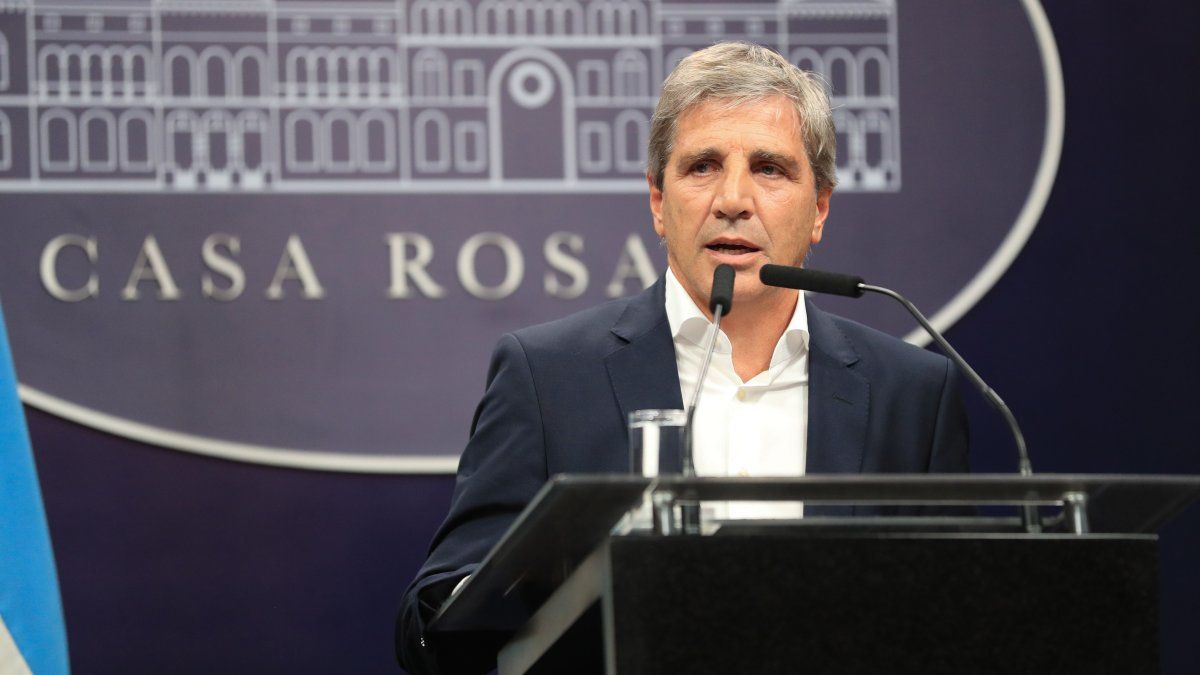The exchange market – and President Javier Milei – face a silent threat, but of considerable proportions: the Potential Drafting in dollars from the private sectordriven by a Increase in devaluation expectations.
This risk, which puts in check the stability of the international reserves of the Central Bank of the Argentine Republic (BCRA), finds its origin in the very structure of the exchange scheme that has predominated for 2024-2025. The dependence on currency flows from private debt – commercial as financial – has been a key pillar for the accumulation of US $ 8.1 billion in the official market since September 2024. However, The fragility of this model becomes evident when the certainties on the official exchange rate begin to fade.
The mechanism is clear: an increase in devaluation expectations alters the incentives that have sustained indebtedness in dollars so far. The companies, which took advantage of a “Crawling Peg” below interest rates in pesos to leverage in foreign currency, could choose to reduce their exposure in dollars to the perspective of a exchange adjustment. This “disarmament” is not a hypothetical scenario, but a concrete possibility with quantifiable implications.
According to the latest information published by the BCRA analyzed by the PXQ consultant, The Commercial External Debt Stock with maturities agreed between 0 and 3 months amounts to $ 27.4 billion. This figure, which represents short -term commitments, constitutes a significant magnitude that could translate into a massive currency exit if expectations deteriorate.
The probability of this disappointment is not an abstract calculation. In the last nine days, the BCRA sold more than US $ 1,445 million in the official marketreflecting a drop in the supply of currencies and an increase in private demand, partly motivated by rumors on changes in the exchange scheme within the framework of negotiations with the IMP. According to analysts, If this dynamic accelerates, the US $ 27.4 billion in short -term commercial debt could become an immediate pressure on reserves BCRA net, whose response capacity is already limited.
The risk does not end there. To this figure is added a stock of bank loans in foreign currency of US $ 14,283 millionwhich raises the total of potentially vulnerable dollars to more than U $ 41,000 million. A simultaneous disarmament of these positions, even if it is partial, could generate a waterfall effect: greater demand for currency, fall of reserves and, ultimately, a forced adjustment of the exchange rate or interest rates. In a context where private M3 grew 32% in real terms since April 2024, the availability of pesos to feed this dynamic is out of discussion.
Dollar: a scheme under pressure
The sustainability of the current exchange scheme depends on the confidence in the stability of the official exchange rate. In recent months, the incentive for companies to be borrowed in dollars remained thanks to a favorable difference between the monetary policy rate (close to 35% annual effective) and the “crawling peg” rhythm (around 12.7% per year). However, this advantage fades when the market begins to anticipate a exchange leap. The liquidation of currencies by the exporters, which reached an average of US $ 100 million daily in the first 2025 two -month period, already shows signs of retraction, falling au $ 80 million per day in the last week, with minimums of US $20 million. This behavior change reflects how expectations can quickly alter the flows that have underpinned the BCRA.
An additional appearance complicates the panorama: The official narrative that “there are no pesos for a run” does not resist a rigorous analysis. Although the broad monetary base (BMA) has been fixed since April 2024, the growth of private M3 shows that the amount of pesos in the economy is not as restricted as stated. The elimination of the remunerated liabilities of the BCRA, compensated by an increase in the issuance of treasure debt, has been more accounting exercise than an effective restriction. In a scenario of loss of confidence, the holders of assets in pesos – such as bonds or deposits – could detach them to acquire currencies, generating a pressure that the BCRA could not neutralize without sacrificing reservations or abandon their objective of interest rates.
Advances in negotiations with the IMF: a key advertisement of the government
In this context of uncertainty, the Argentine government made a significant announcement that could change the course of the situation. Minister Luis Caputo confirmed that a new program is being negotiated with the IMF for an amount of US $ 20,000 million, for the first time putting a specific figure to the discussions that had been developing since the late 2024. Caputo said that this agreement seeks to calm tensions in local markets and strengthen the BCRA reserves, which are currently in negative field, estimated at around US $ 10,000 million in red. The presumption is that, of approximately US $ 20,000 U $ 8,000 million would be used to reinforce the reserves of the Central Bankwhile the remaining US $ 12,000 would be used to pay capital and interest on the existing debt with the agency, although the Government implied that the reserves would rise to $50,000 million with the additional contribution of other organizations.
The Government also expressed its expectation of receiving a broad initial disbursement, which would accelerate the disarmament of current exchange controls, a key objective of the administration of Javier Milei. Caputo emphasized that the speed to lift the stock will depend on the speed with which the IMF funds are completed, and ruled out the possibility of an abrupt devaluation after the agreement, arguing that there would be no “margin” for a significant exchange adjustment. In addition, the IMF directory is expected to meet in the coming weeks to vote on the program, which could realize the agreement between April and May 2025. This announcement adds to the government’s efforts to obtain additional financing from other agencies, such as the World Bank, the Inter -American Development Bank and the CAF – CAF – Development Bank of Latin America and the Caribbean, to even more strengthening international reserves.
However, negotiations are not exempt from challenges. The IMF has expressed Concerns about interventions in the exchange marketand the agreement is expected to include a mechanism that limits the performance of the BCRA, allowing to intervene only if the dollar drills a floor or exceeds a predefined roof, while it is allowed to float freely within those limits. These stops and floors could be adjusted monthly, which could have a direct impact on inflation, a sensitive point for the Argentine economy. Despite the advances, the government still needs the support of countries such as Germany and Japan, known for being more demanding in negotiations with the IMF, which could delay final approval.
A dilemma of economic policy
Faced with this risk, according to the PXQ consultant, the BCRA faces an economic policy dilemma. On the one hand, I could try to anchor expectations through clear signals of continuity in the exchange scheme, possibly backed by the IMF. On the other, I could opt for a more active intervention in the change market, at the expense of its reserves, or allow an adjustment in the interest rates that increase the disarmament of positions in pesos, although this could stress the renewal of the treasure debt.
The magnitude of the challenge – with U $ 27.4 billion in short -term commercial debt as a Damocles sword – demands a coordinated and credible response. The government’s announcement on the program with the IMF could be a step in that direction, but its success will depend on the capacity of Milei and Caputo to close the agreement quickly and manage market expectations. Without an effective execution, dollars in dollars could go from being a potential risk to a concrete crisiswith unpredictable consequences for macroeconomic stability.
Source: Ambito




